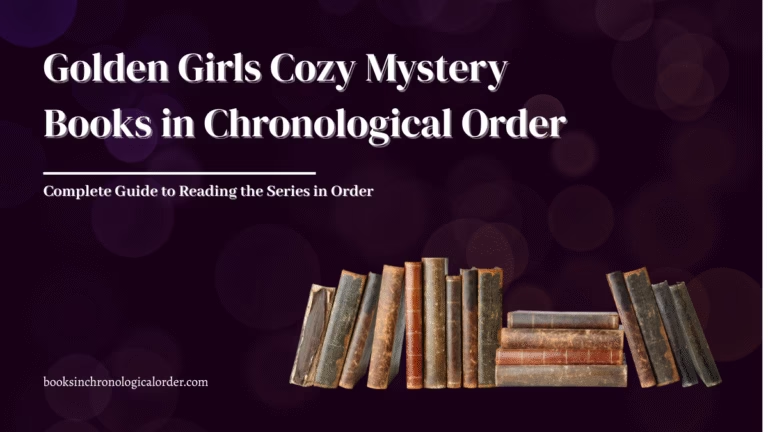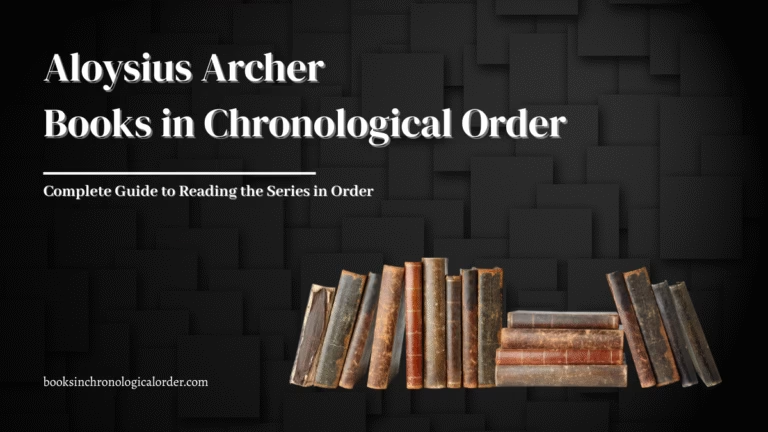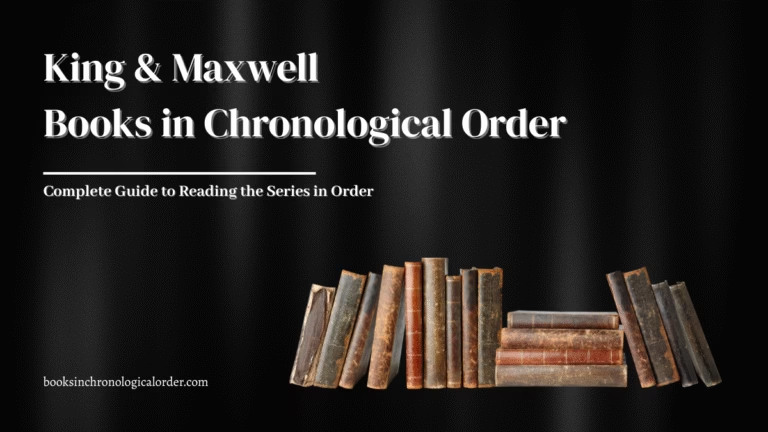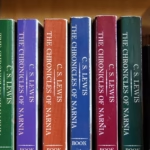Read every series in the right order
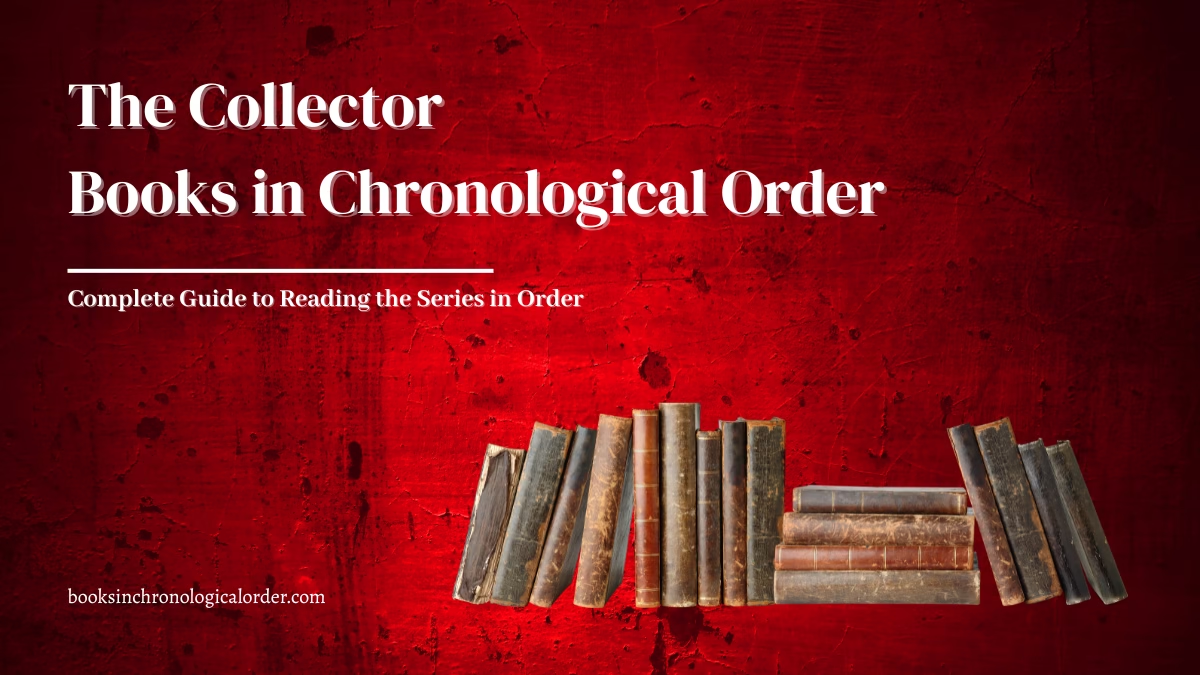
The Collector Books in Chronological Order – Complete Reading Guide
Table of Contents
Quick Answer (TL;DR)
If you want the cleanest journey through the cases, themes, and character arcs, read The Collector books in chronological order as follows:
- The Butterfly Garden
- The Roses of May
- The Summer Children
- The Vanishing Season
This sequence mirrors both in-universe chronology and publication order and preserves the emotional through-lines for survivors and FBI agents alike.
Introduction
Dot Hutchison’s The Collector series is one of the most bingeable, emotionally charged crime cycles in modern thriller fiction. It begins with the now-famous Garden, a terrifying enclosure where kidnapped young women—the “Butterflies”—are branded with exquisite tattoos and caged by a captor who believes he is preserving beauty. From that singular horror grows a wider canvas: an FBI Crimes Against Children team navigating the aftermath—survivors learning to live again, parents grieving, and investigators carrying their own scars.
Because the series is character-centred and trauma-conscious, reading order matters. This guide from Books in Chronological Order lays out The Collector books in chronological order, assembles quick facts (pages, read time, difficulty, content warnings), provides purchase-ready links, and offers detailed yet spoiler-aware blurbs so you can pick up the right book at the right time.
Quick Facts
| Item | Details |
|---|---|
| Series | The Collector by Dot Hutchison |
| Confirmed Books | 4 (The Butterfly Garden; The Roses of May; The Summer Children; The Vanishing Season) |
| Primary POV & Cast | Survivors and FBI agents (Brandon Eddison, Victor Hanoverian, Mercedes Ramirez; later, Eliza Sterling) |
| Page Count Range | ~300–340 pages each (editions vary) |
| Estimated Read Time* | ~8–10 hours/book at 30–35 pages/hour |
| Reading Difficulty | Moderate (straightforward prose, heavy themes) |
| Genre Labels | Crime Thriller • Psychological Suspense • Police Procedural |
| Content Warnings | Kidnapping, CSA/assault (non-graphic on-page in many scenes but explicit implications), domestic violence, murder, vigilantism, trauma/PTSD |
| Media Adaptations | None announced at time of writing |
| Ideal Age Range | Adult & mature YA readers (17+) due to sensitive content |
| Setting Vibe | Contemporary U.S.; institutional settings, safe houses, suburban/religious sites, and the notorious “Garden” |
| Best Reading Path | The Collector books in chronological order (matches publication order) |
*Your pace may vary by format and edition.
About The Collector Book Series
At its core, The Collector is about what comes after a monstrous crime: the interrogation rooms, hospital corridors, and living rooms where healing and investigation co-exist. The Butterfly Garden detonates the premise with a claustrophobic survival narrative, then the subsequent books widen the lens:
- The Roses of May follows a ritualistic church-murder case that intersects with a family already devastated by a previous killing; FBI agents (especially Eddison) confront both the crime and its reverberations in those left behind.
- The Summer Children pivots to Mercedes Ramirez, whose own past meets an escalating surge of “rescued” children deposited on her doorstep by an “angel” who murders abusive parents.
- The Vanishing Season pulls Eliza Sterling into sharp focus alongside Eddison when a present-day child abduction links to a decades-long pattern—and to Eddison’s personal history.
The result is a cycle in which each book stands on its own case file, yet threads together to form a survivor-centred, trauma-aware mosaic. That’s precisely why readers ask for The Collector books in chronological order—to follow the human story, not only the crimes.
The Collector Books at a Glance
| # | Title | Amazon Buy Link |
|---|---|---|
| 1 | The Butterfly Garden | Buy On Amazon |
| 2 | The Roses of May | Buy On Amazon |
| 3 | The Summer Children | Buy On Amazon |
| 4 | The Vanishing Season | Buy On Amazon |
The Collector Books in Chronological Order
The blurbs below are spoiler-aware. We preserve the major surprises while giving you enough context to choose confidently. Reading The Collector books in chronological order is the best way to experience the evolving cast, trauma arcs, and investigative dynamics.
1) The Butterfly Garden
- Premise: In the shadow of an isolated estate, a man known as the Gardener turns young women into his living “butterflies,” tattooing their backs with wings and imprisoning them in a lush indoor garden. Survival is a negotiation of rules and risks. The novel is framed by survivor Maya’s post-escape interview with authorities, which slowly reveals the garden’s routines, hierarchies, and fractures.
- Tone & Themes: Claustrophobia, endurance, found family under duress, the complexity of survival choices.
- Trigger Notes: Abduction, sexual violence (often implied rather than graphic), coercion, murder.
- Why first: Everything—everything—echoes here. Survivors you’ll meet again, FBI agents who’ll carry forward, and an undercurrent of “what does healing look like?” that the later books honour. If you’re charting The Collector books in chronological order, this is the cornerstone.
2) The Roses of May
- Premise: Four months after the Garden’s destruction, FBI agents Brandon Eddison, Victor Hanoverian, and Mercedes Ramirez are still embedded in survivor aftercare when a ritualistic killer returns with the thaw. Priya Sravasti, whose sister was murdered years earlier, is targeted; she and her mother, always on the move, are pulled into a fresh storm—this time with a chance to influence the hunt.
- Tone & Themes: Grief and resilience; the precarious mechanics of safety (legal, emotional, and practical) for families that have already endured the worst. We also see the team’s rhythms: Eddison’s intensity, Hanoverian’s steadiness, Mercedes’s protectiveness.
- Trigger Notes: Family trauma, ritualistic murder (aftermath focus), stalking.
- Why second: It bridges the immediate aftermath to a broader investigative web, letting you watch the agents become more than case managers—they’re anchors for devastated families. Chronology matters; relationships established here shape everything to come.
3) The Summer Children
- Premise: One blood-covered child with a teddy bear arrives on Mercedes Ramirez’s porch and says an “angel” saved him—by killing his abusive parents. Then another child arrives. And another. The team confronts a vigilante whose righteous rage matches the system’s worst failures, and Mercedes must navigate a landscape that mirrors her own scarred past.
- Tone & Themes: Ethical ambiguity; the chasm between justice and revenge; secondary trauma for investigators; the personal cost of being the safe harbour.
- Trigger Notes: Child abuse (disclosed/aftermath), murder of abusers (on-scene consequences), vigilantism.
- Why third: This is Mercedes’s book. Read it here to watch her arc crest—professionally, emotionally, morally—while the series interrogates the line between protection and punishment.
4) The Vanishing Season
- Premise: When eight-year-old Brooklyn Mercer vanishes, Eliza Sterling and Brandon Eddison take point. The case digs up a decades-long pattern of missing girls who share Brooklyn’s precise description—and the long-buried trauma of Eddison’s own family. Eliza’s resemblance to the child complicates public perception and risk, and her investigation puts pressure on an increasingly unstable partner.
- Tone & Themes: The grinding persistence of cold patterns, the ethics of proximity (investigators who look like the victims), and the corrosive nature of unsolved personal grief.
- Trigger Notes: Child abduction, cold-case implications, psychological unraveling.
- Why fourth: It closes the loop on several long-brewing threads and is designed to be read after you’ve built history with Eddison and the rest of the team. For anyone following The Collector books in chronological order, this finale hits hardest when you know where everyone started.
Series Timeline & Character Development
Survivors’ Continuum:
- Butterflies (Book 1) → counselling, court, housing, triggers, coping strategies. Later books treat survivorship not as a plot device but as an ongoing, human process: panic attacks, found-family networks, new routines, and the constant negotiation of boundaries.
The FBI Team (Core Four):
- Victor Hanoverian: The steadying centre in interrogation rooms; listens more than he speaks; quietly decisive.
- Brandon Eddison: Fierce empathy and dangerous self-sacrifice; Book 4 pulls his personal history into the spotlight.
- Mercedes Ramirez: Competence layered over old wounds; Book 3 tests her limits by placing vulnerable kids—and an avenging angel—on her doorstep.
- Eliza Sterling: Emerging perspective; Book 4 shifts considerable weight to her as both investigator and visual echo for a victim profile.
Arc Architecture (High Level):
- Book 1 fractures everyone.
- Book 2 builds survivor systems and pushes Eddison’s protective drive into complex territory.
- Book 3 asks what justice means when the law fails, dragging Mercedes into a mirrored past.
- Book 4 confronts pattern crimes across decades and forces Eddison—and by extension the team—to reckon with grief, identity, and endurance.
Novels Sorted in Order of In-Universe Events
| # | Title | Amazon Buy Link |
|---|---|---|
| 1 | The Butterfly Garden | Buy On Amazon |
| 2 | The Roses of May | Buy On Amazon |
| 3 | The Summer Children | Buy On Amazon |
| 4 | The Vanishing Season | Buy On Amazon |
(This is also the reading path we recommend whenever someone asks for The Collector books in chronological order.)
Novels Sorted in Order of Publication
| # | Title | Amazon Buy Link |
|---|---|---|
| 1 | The Butterfly Garden | Buy On Amazon |
| 2 | The Roses of May | Buy On Amazon |
| 3 | The Summer Children | Buy On Amazon |
| 4 | The Vanishing Season | Buy On Amazon |
(Matches the timeline; easy mode.)
Companion Works
- Direct tie-ins: None officially within The Collector universe (no novellas/anthologies that alter the reading order).
- By the same author: A Wounded Name (Hamlet-inspired YA) and standalones/thrillers outside this universe. These are optional extras and don’t affect The Collector books in chronological order.
Editions & Formats (hardcover, collector, audio)
- Kindle/eBook & Paperback: Widely available for all four titles. Trade paper is the common print format for many regions.
- Hardcover: Availability varies by territory and print run; first book has seen pricier hardcover/library-binding options on resale.
- Audiobook: All four titles are on Audible and other platforms. The narration style complements the interview/procedural framing—great for commuters who want to experience The Collector books in chronological order hands-free.
- Collector/Signed Editions: Not widely standardized; check indie bookstores and special-edition subscription boxes around anniversary dates or reprints.
Pro tip: If you’re sensitive to the subject matter, audio can sometimes create distance; if you prefer more control, eBook lets you search, skim, and set your own pacing.
Why Read The Collector Books in Chronological Order?
- Character Continuity: Survivors recur; agents evolve. Starting with The Butterfly Garden lets you understand who everyone is before their later decisions.
- Emotional Weight: The later books assume you know what happened in the Garden and why the team carries specific scars.
- Case Logic: Ongoing references, therapy arcs, and changes in inter-agent dynamics are linear. Reading The Collector books in chronological order prevents confusion and amplifies payoff.
Author Spotlight: Dot Hutchison
Dot Hutchison blends psychological intimacy with procedural precision. Before The Butterfly Garden went viral in thriller circles, Hutchison penned A Wounded Name, a YA re-imagining of Hamlet that showcased the author’s sensitivity to voice, grief, and mythic resonance. That same sensitivity powers The Collector, where survivors aren’t props—they’re people who insist the narrative remain ethical, humane, and difficult in the right ways.
Hutchison’s background includes time in bookstores, craft retail, a Boy Scout camp, and even the Renaissance Faire (as a human combat chess piece!), a patchwork of hands-on environments that shows in her tactile settings and lived-in details. She’s an active presence online and, crucially, consistent about signalling content risks so readers can opt in thoughtfully.
Media Adaptations (films, TV, radio)
As of this writing, no official adaptations of The Collector have been announced. That said, the series’ interview framing, multi-book task-force ensemble, and case-of-the-book architecture would translate naturally to limited series television. If that ever happens, expect the production to navigate survivor-centred storytelling with care. For now, your best “adaptation” is the audiobook experience—an immersive way to consume The Collector books in chronological order while preserving the tension of the interrogation-room reveals.
FAQs
Do I have to start with The Butterfly Garden?
You’ll get the most emotional and narrative payoff if you do. The series references the Garden repeatedly; read The Collector books in chronological order for the intended arc.
Are the books extremely graphic?
The subject matter is heavy, but many depictions are implied or handled through aftermath and interview. That said, the material includes abduction, assault, and homicide. Use the content warnings above.
Are there recurring characters besides the agents?
Yes—some survivors reappear, and relationships built in one book matter later. Another reason to preserve order.
Which format is best?
If you’re anxious about certain scenes, eBook offers easy skimming. If you love performance, audio adds atmosphere while remaining respectful.
Will there be more Collector books?
As of now, the series is a four-book arc. If more arrive, they’ll slot after The Vanishing Season unless marketed as prequels.
I’m new to dark crime fiction—where should I start?
Begin with The Butterfly Garden, take breaks between books, and read with intention. You can also start with The Roses of May if you want a wider community focus before returning to the Garden’s claustrophobia.
Final Thoughts
If you value thrillers that honour survivors, complicate justice, and put investigators’ humanity under the microscope, The Collector belongs on your list. Keep this guide handy, load your e-reader, and experience The Collector books in chronological order to feel the full weight—and hope—of Hutchison’s design. It’s a journey through the worst humans can do and the best others can try to be afterward. And in a genre that sometimes rushes past consequence, these novels linger where it matters: on healing, choice, and the brutal, necessary work of carrying on.

